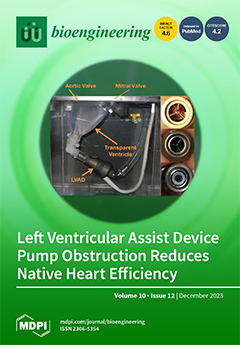Introduction: Obstructive sleep apnea (OSA) and loud snoring are conditions with increased cardiovascular risk and notably an association with stroke. Central in stroke are thrombosis and thromboembolism, all related to and initiaing with platelet activation. Platelet activation in OSA has been felt to
[...] Read more.
Introduction: Obstructive sleep apnea (OSA) and loud snoring are conditions with increased cardiovascular risk and notably an association with stroke. Central in stroke are thrombosis and thromboembolism, all related to and initiaing with platelet activation. Platelet activation in OSA has been felt to be driven by biochemical and inflammatory means, including intermittent catecholamine exposure and transient hypoxia. We hypothesized that snore-associated acoustic vibration (SAAV) is an activator of platelets that synergizes with catecholamines and hypoxia to further amplify platelet activation.
Methods: Gel-filtered human platelets were exposed to snoring utilizing a designed vibro-acoustic exposure device, varying the time and intensity of exposure and frequency content. Platelet activation was assessed via thrombin generation using the Platelet Activity State assay and scanning electron microscopy. Comparative activation induced by epinephrine and hypoxia were assessed individually as well as additively with SAAV, as well as the inhibitory effect of aspirin.
Results: We demonstrate that snore-associated acoustic vibration is an independent activator of platelets, which is dependent upon the dose of exposure, i.e., intensity x time. In snoring, acoustic vibrations associated with low-frequency sound content (200 Hz) are more activating than those associated with high frequencies (900 Hz) (53.05% vs. 22.08%,
p = 0.001). Furthermore, SAAV is additive to both catecholamines and hypoxia-mediated activation, inducing synergistic activation. Finally, aspirin, a known inhibitor of platelet activation, has no significant effect in limiting SAAV platelet activation.
Conclusion: Snore-associated acoustic vibration is a mechanical means of platelet activation, which may drive prothrombosis and thrombotic risk clinically observed in loud snoring and OSA.
Full article






